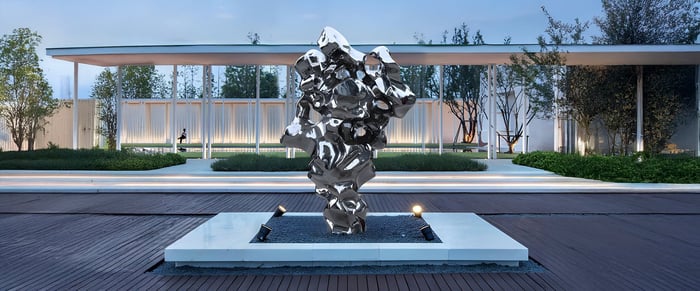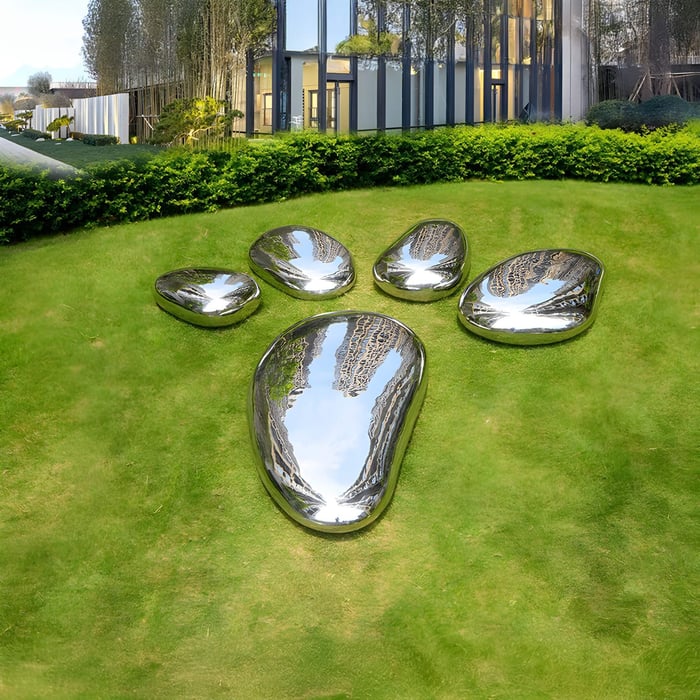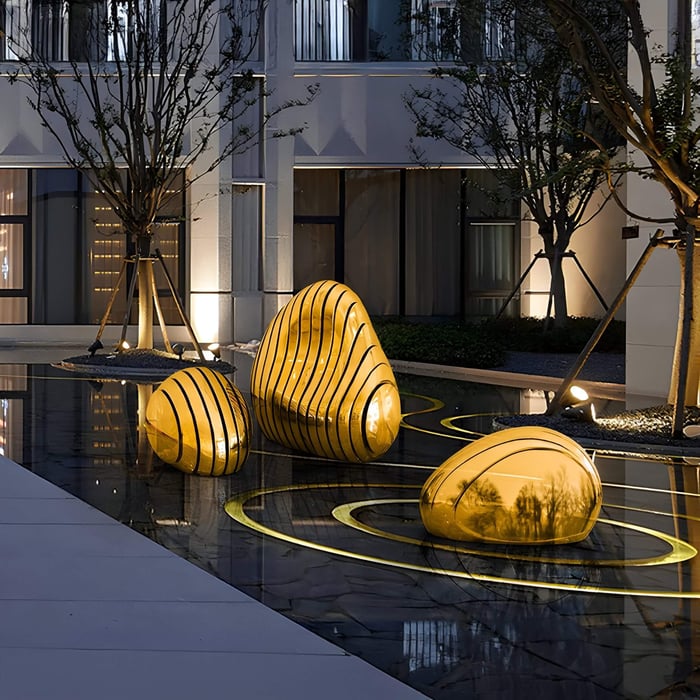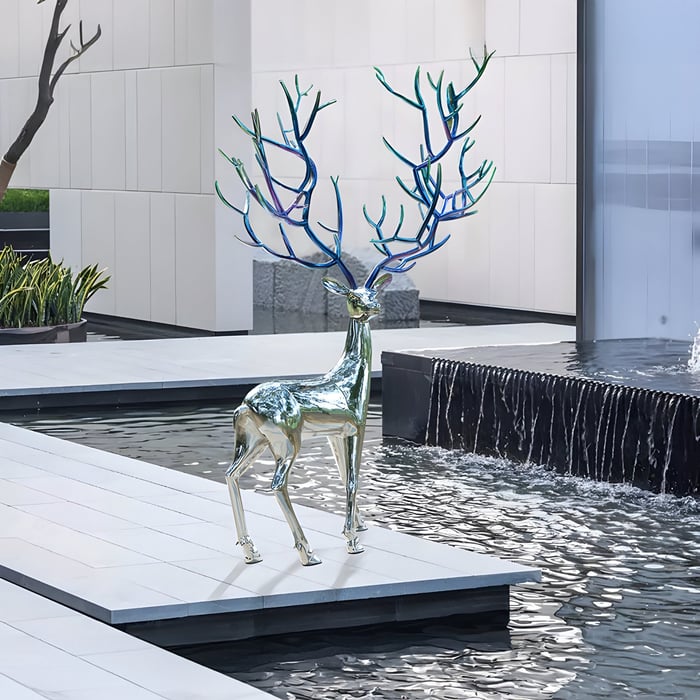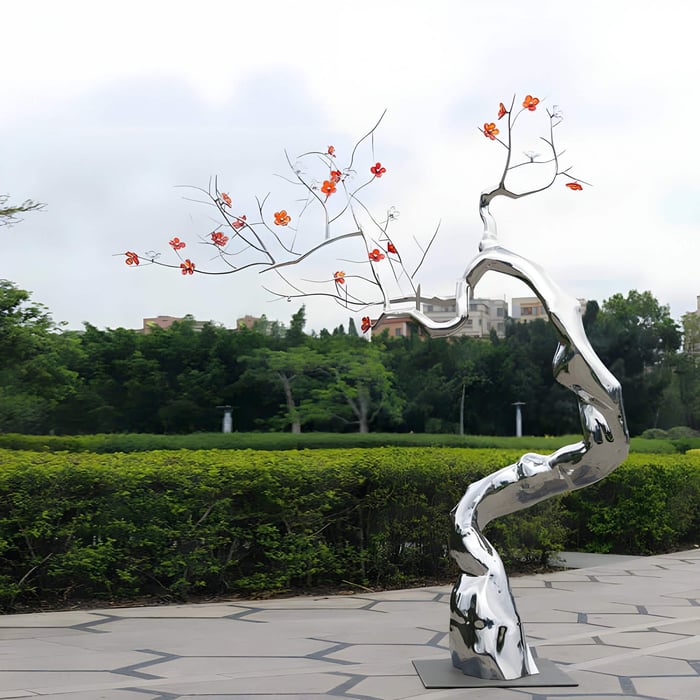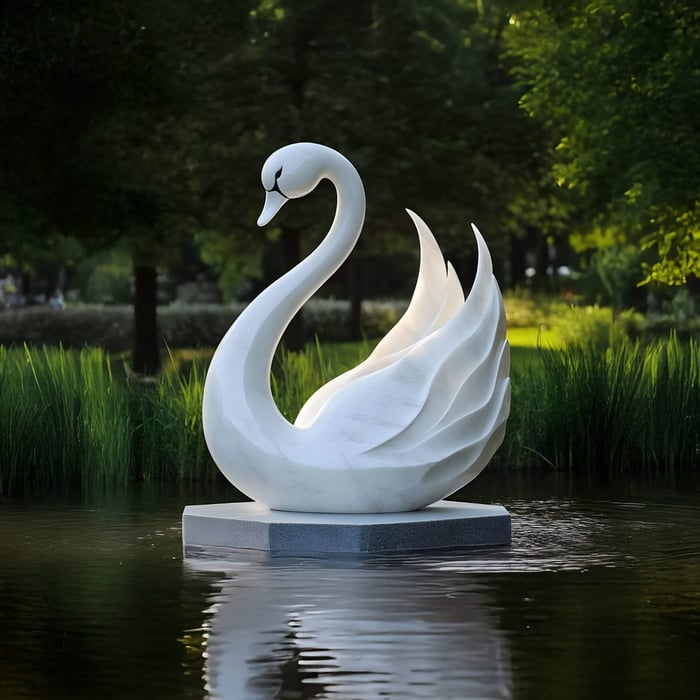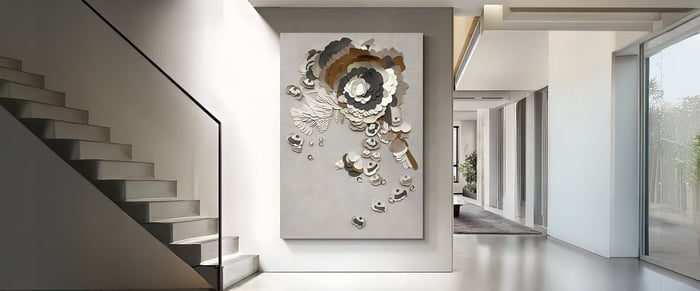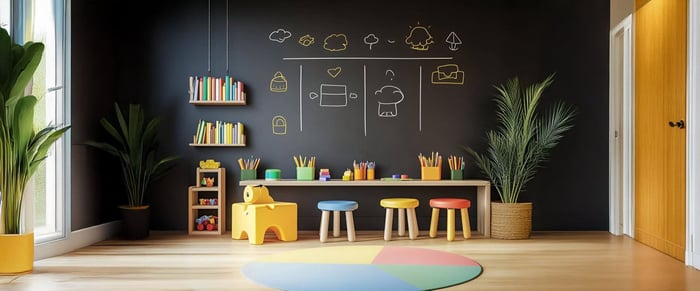Table of Contents
- Introduction - The Allure of Organic Garden Sculptures
- What Defines an Organic Form Sculpture?
- Materials That Echo Nature
- Styles That Embrace Natural Inspiration
- Placement Tips: Where Organic Sculptures Shine
- Creating Cohesion: Sculpture & Landscape Interaction
- Care, Durability & Weathering Gracefully
- FAQs
- Conclusion - Bringing Nature’s Form into Your Garden
Introduction - The Allure of Organic Garden Sculptures
A well-placed sculpture can transform a garden from pleasant to extraordinary, but the real magic happens when the artwork feels like it belongs to the landscape itself. Garden Sculptures inspired by nature capture this harmony, echoing organic forms and flowing lines found in plants, water, or wildlife. Rather than disrupting the natural rhythm of the outdoors, these pieces add depth, curiosity, and a sense of balance.
Whether it’s a bronze garden sculpture that develops a soft patina over time, or a glass garden ornament catching sunlight like a droplet of dew, the choice of material and form sets the mood. In this guide, we’ll look at defining features of organic forms, explore materials and styles, share placement ideas, and cover durability. By the end, you’ll have practical and inspiring ways to bring organic garden sculpture into your outdoor spaces.
What Defines an Organic Form Sculpture?
An organic form sculpture is characterised by flowing lines, irregular shapes, and curves that mimic the unpredictability of nature. Unlike geometric art, which relies on symmetry and sharp edges, organic pieces often feel alive, as though they might shift with the breeze.
The effect is more than visual. Gardeners and designers often describe these forms as calming, grounding, and emotionally resonant. They remind us of roots, rivers, clouds, or growth itself, making them a perfect bridge between art and the natural environment.
Materials That Echo Nature
Choosing the right material is central to the impact of a sculptural garden focal point.
Wood & Reclaimed Materials: Oak, driftwood, or reclaimed timber offer tactile warmth and sustainability. As they weather, they blend beautifully with the surroundings.
Stone & Bronze with Patina: A marble sculpture delivers refined elegance, while bronze develops a green or brown patina over time, adding character.
Steel & Rustic Metals: Weathering steel (Corten) or copper oxidises into earthy tones. These steel sculptures take on a living quality, shifting colour through the seasons.
Glass & Resin: Reflective, translucent, and fluid, they work well for flowing form sculptures that mimic water, petals, or leaves. UV-stabilised finishes are key for durability.
Eco-Friendly Practices: Increasingly, artists turn to recycled steel, sustainably sourced stone, or even bio-resins to create eco-friendly garden art. These approaches honour nature while reducing impact.
Styles That Embrace Natural Inspiration
Nature-inspired garden sculptures span many styles, each with unique effects:
Abstract Organic Forms: Suggestive shapes inspired by seeds, waves, or roots. These modern organic sculptures are ideal for minimalist landscapes.
Wildlife & Botanical Realism: Animal sculptures such as deer, owls, or koi fish, and botanical garden statues like lotus blooms or leaf patterns, bring nature to life.
Kinetic & Light-Responsive Forms: Kinetic garden sculptures harness wind or light, gently moving or glowing at night, adding dynamism to quiet corners.
Large-Scale Landscape Pieces: Monolithic landscape sculptures blend seamlessly with lawns, hedgerows, or courtyards, designed to feel like they’ve grown there over centuries.
Placement Tips: Where Organic Sculptures Shine
Placement is as crucial as the sculpture itself.
Pathways & Walkways: Guide the journey with modest organic forms that invite pause.
Focal Plant Beds: Nestle rustic garden statues among perennials or shrubs for natural camouflage.
Water Features: Reflections double the effect, perfect for glass or bronze sculpture.
Lawns & Open Spaces: Larger works demand breathing room; a rolling lawn offers contrast.
Woodland Settings: Moss-covered stone or timber finds its truest voice among dappled shade.
Pro tip: Ensure scale matches surroundings. Too small and it disappears, too large and it overpowers planting.
Creating Cohesion: Sculpture & Landscape Interaction
For seamless integration, match the sculpture’s texture, colour, and scale to its setting. A smooth marble piece glows against rough hedgerows, while rusted steel pairs effortlessly with gravel or bark mulch.
Seasonal changes also shape perception. In spring, flowers frame sculptures with bursts of colour, while winter reveals stark silhouettes. This evolving relationship adds life and meaning to the artwork. Designers often look to examples like Charles Jencks’ Garden of Cosmic Speculation, where art and landform are inseparable, to inspire such synergy.
Care, Durability & Weathering Gracefully
One joy of eco-friendly garden art is how it changes over time, but a little care goes a long way.
Wood & Metal: Seal for protection or allow natural patina. Ensure bases are raised to avoid soil damp.
Stone & Bronze: Power wash gently; avoid harsh chemicals to preserve patina.
Glass & Resin: Use UV-resistant finishes and avoid constant direct sun to prevent fading.
In many cases, weathering enhances authenticity, rust streaks, moss, and lichen can add to the sculpture’s charm.
FAQs
What makes a sculpture “organic”?
It reflects natural shapes - curves, asymmetry, and textures resembling plants, water, or animal life.
Are organic sculptures suitable for all climates?
Yes, provided the material matches conditions: bronze and stone thrive in wetter climates, while UV-stabilised resin suits sunnier locations.
How do you secure large sculptures on uneven ground?
Use broad bases, underground anchors, or custom plinths to ensure stability.
Can organic glass or resin works survive winter?
With UV and frost-resistant coatings, yes - though sheltered placement is best.
Should sculpture dominate planting?
Neither should dominate. The most effective designs treat planting and sculpture as partners, art framing flowers, or shrubs shaping the backdrop.
Conclusion - Bringing Nature’s Form into Your Garden
Organic forms invite us to see our gardens as living canvases, where art and environment thrive together. Garden Sculptures in wood, bronze, steel, or glass are more than décor, they’re anchors for mood, conversation, and reflection.
Whether you choose a wildlife sculpture tucked among ferns, a flowing form sculpture in steel that evolves with rust, or a modern organic sculpture in glass glowing by a pond, the effect is the same: harmony. Start small with a rustic garden statue, or go bold with a large landscape sculpture, either way, you’ll find the dialogue between art and nature both grounding and inspiring.
Browse curated nature-inspired garden sculptures and explore placement possibilities at Giant Sculptures. For further insight into how public gardens embrace art in nature, see the Royal Horticultural Society’s guidance on sculpture in gardens.














































































